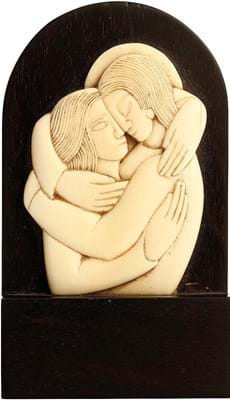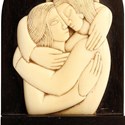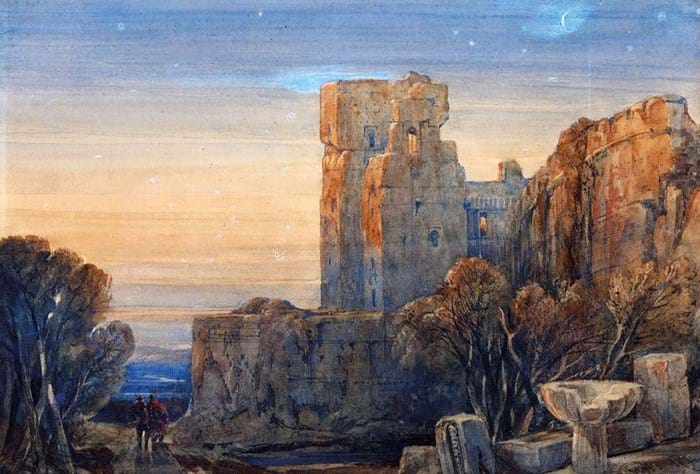Consigned from an estate in west London, this 20in x 2ft 3in (51 x 69cm) oil on canvas laid on board, signed by an unidentified hand in Cyrillic, went on to overshoot its £800-1200 guide to sell for £15,000. The buyer was based in Moscow.
“I could tell it was clearly a good thing and the quality spoke for itself,” said Chiswick’s picture specialist Jan Leman.
“It was a difficult palette to work with, going from those extreme cools and colds into that beautiful slither of illuminated golden sunlight. But none of us, including our Russian readers and writers here, could figure out whose signature it was.”
So, whose was it?
Russian art dealer James Butterwick of the James Butterwick Gallery in London, told ATG he is certain it is a late work by Andrei Shil’der (1861-1919).
“Shil’der is a pretty well-known 19th and early 20th century artist who can be described as in the second division of the best Russian landscape painters,” he said.
“He was a member of the leading Wanderers group [of Russian Realist artists] and painted in the manner of his teacher Ivan Shishkin [1832-98], the grandfather of Russian landscape painting.”
The broken bridge in the foreground struck Butterwick as perhaps symbolic of the Russian Revolution that had taken place two years earlier – an event which Shil’der would not have supported.
Born into a poor aristocratic family, Shil’der probably learnt to paint from his father, who was also an artist. He went on to become a prominent name in Russia art, exhibiting more than 100 pictures with the Wanderers.
Today, his best and largest canvases can command sums in excess of £150,000, while his mid-sized works can fetch in excess of £50,000.
Alhambra at dusk
Elsewhere in the sale, the decline in value of good 19th century pictures was evidenced by the performance of a fine 8½ x 12½in (22 x 32cm) watercolour of the fortress of the Alhambra at dusk by the prominent Orientalist painter David Roberts (1796-1864).
The Tower of the Seven Vaults, Granada was painted on a three-week sketching trip to the city in the spring of 1833, and was one of 21 finished works from the visit completed in 1834.
Although it was a Spanish scene and not one of the artist’s preferred Middle Eastern subjects, the watercolour had an impressively long provenance, tracing back to a Christie’s auction in 1860. On the day, it scrapped away on bottom estimate at £2500 to a private collector.
Almost 30 years ago, an inferior version of the Seven Vaults tower painted by Roberts on the same trip in 1833 sold at Sotheby’s London in 1988 for £2200.
Among the sculptures in the Chiswick sale was a 4½in (11.5cm) ivory carving by Eric Gill (1882- 1940) from a local estate.
Lovers Embrace, a c.1920 piece of entwined figures with their faces touching on an ebony base, sold for a multi-estimate £13,500.
Dr Ruth Cribb, an authority on Gill’s sculptural works, wrote in the catalogue note that the piece was not listed in the artist’s catalogue raisonné, but “the hair and the faces, the hands and the style of relief all indicates it is by Gill”.
In September, Duke’s of Dorchester sold a similar-sized marine ivory of a Madonna and Child carved by Gill c.1922. It been consigned from the Debenhams family of department store fame, and sold for £21,000 (see ATG No 2312).



















